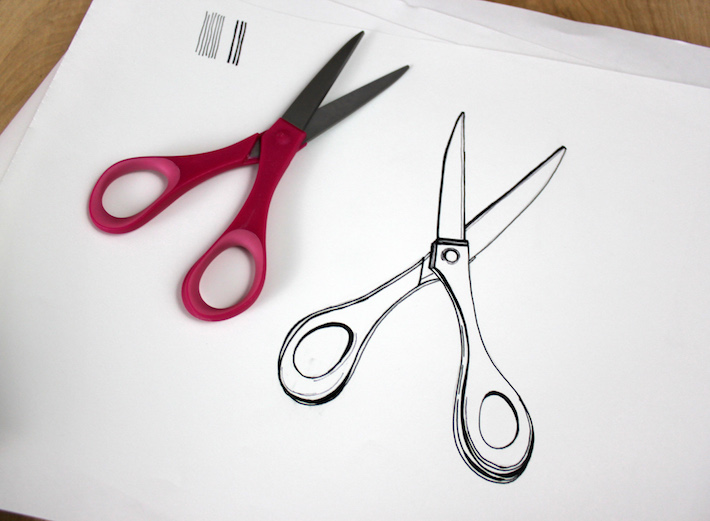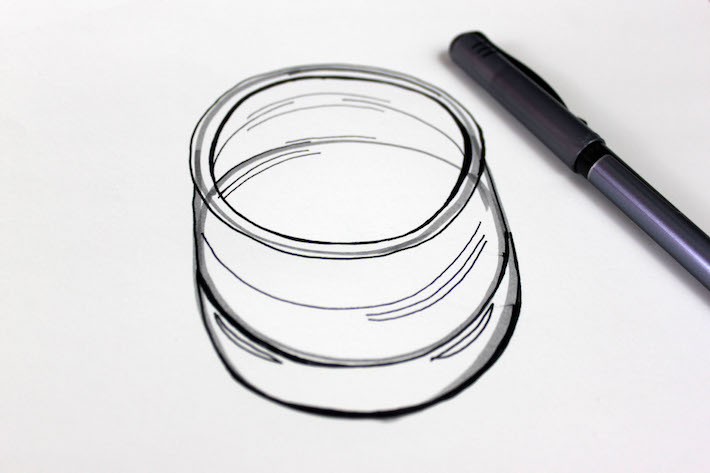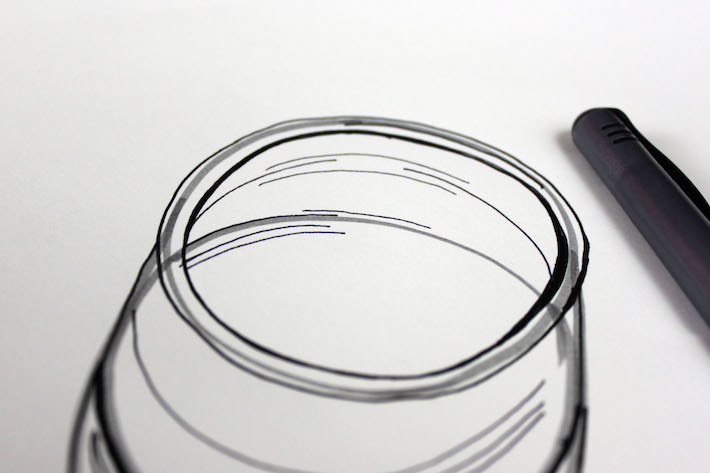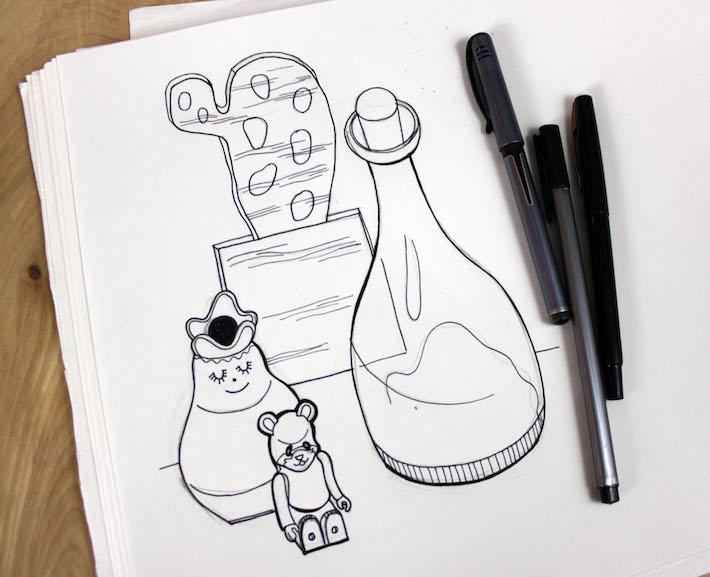If you’ve never heard the term “contour line” before, I assure you that you’ve seen them in action. In art, contour lines make up an outline. They define what something is, its shape and even its texture. Contour lines are vital when creating a drawing.
Try a fun exercise to incorporate contour lines in art!

What is a contour line?
A contour line can be straight or wavy, thick or thin, and any color you like. The purpose of them is to emphasize mass or volume without the use of shading. You’ll use contour lines to build form and dimension and to show changes of planes within the object — such as a highlight on an apple or a seam on a shoe. There, the contour line shows that the subject is rounded rather than flat. Or, like the scissors above, it shows the curved edges of the handle and the fine tip of the blades.


Notice how the thickness of a contour line can make edges appear closer or farther away from us.
Contour line exercise: still life
Since the possibilities for contour lines are endless, a still life composition is a great way to practice the technique. To begin, gather some of your favorite objects. Take notice of their shapes, texture and sizes — this will allow you to draw a variety of contour lines.
For this exercise, you’ll need some drawing paper, a pencil and a few of your favorite pens. Select pens with various widths of tips. This will come in handy to make things appear foreshortened.
Step 1: Start with a pencil sketch.

I always start a project by sketching in pencil. It’s much more forgiving than ink, paint, colored pencils or crayons, and I’m comfortable making mistakes and correcting them with an eraser. Sketch your assembled still life, concentrating only on the outlines and some details. Don’t worry about shading the objects — we’re only dealing with lines today!
Having trouble following a subject’s outline? Here’s a trick I often use: imagine a tiny ant is crawling on the outside each object. What route would it take? Record its fictitious trek on your paper.
Step 2: Trace your lines in pen.

Since our drawing is all about lines, it’s important to have crisp, contrasting marks on the page. A pencil can fade and smudge, but a pen will continue to look great over time.
Using multiple pens with different size nibs, start to trace the lines in your drawing. Starting with your thickest pen tip, determine the parts of your composition that are closest to the viewer and/or in front of another object. Trace the thickest marks over these areas, because they will stand out the most to the viewer and create the illusion of depth.

After you’ve outlined the thickest parts of your composition, gradually move onto finer-tipped pens. The delicate details, such as wood grain texture or tiny highlights are better suited for these utensils, because we don’t want them to stand out as much as the outlines. Doing this also adds visual variety to your work — a mixture of thin and thick lines excite the eye.
And that’s it — you have yourself a composition made of contour lines!

Share tips, start a discussion or ask one of our experts or other students a question.
No Responses to “The Power of Contour Lines in Art”